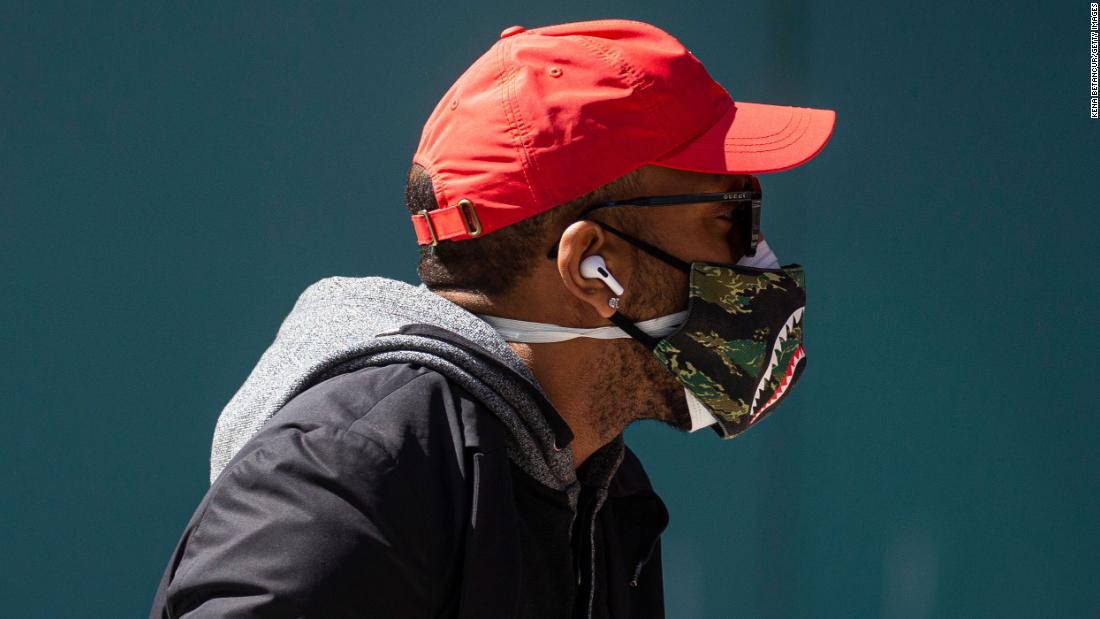
“We have found that wearing two loosely fitting masks does not give you the filtration advantage that a tight-fitting mask will have,” Sickbert-Bennett said in a statement.
“The best form of double masking is when you and the person you are communicating with are each wearing a very form-fitting mask correctly,” she said.
Double masking usually involves placing a disposable surgical or medical grade mask under a cloth mask.
Choose cloth masks with nose wires, the CDC says, and “ bend the nose wire over your nose so that it fits close to your face. ”
Place both masks over the bridge of the nose, under the chin and flat on the face, resting along the skin. “The cloth mask should press the edges of the disposable mask against your face,” the CDC says.
An important note: don’t put two disposable masks on top of each other. Those aren’t “designed to fit tight, and wearing more than one won’t improve the fit,” the CDC says.
Check the fit
- Place your hands against your face around the outer edges of the mask.
- Breathe in and out and check that no air is flowing away from your eyes or from the sides of the mask.
- When the mask fits properly, you will feel warm air coming through the front of the mask and can see the mask material moving in and out with each breath.
- Keep in mind that none of this will work if you pull down your mask to expose your nose. Stay fully masked at all times.
The CDC suggests that men shave their beards or at least trim the beard close to the face. “Masks designed for people with beards are being evaluated, and information will be provided when it becomes available,” the CDC said.
If you have any issues with the fit, the CDC suggests considering a mask fitter, or bracket, to prevent air from leaking around the edges of the mask.
A mask fitter is a small, frame-like device usually made of sturdy or elastic plastic. It is placed over a mask and fastened against the face with headbands or ear loops. These devices are reusable, so you should clean them well after each use.
“Wash wet or dirty masks as soon as possible to prevent them from becoming moldy. Wet masks are difficult to breathe through and are less effective than dry masks,” says the CDC.
Dry your mask completely in a warm or hot dryer, the CDC says, or by hanging it “in direct sunlight to dry completely. If you can’t hang it in direct sunlight, hang or lay it flat and let it dry. dry it completely. “

